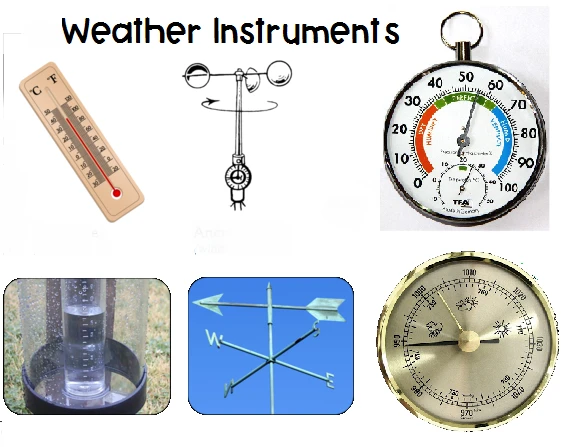
# Weather Instruments: Tools for Measuring Atmospheric Conditions
## Introduction to Weather Instruments
Weather instruments are essential tools used by meteorologists, scientists, and weather enthusiasts to measure various atmospheric conditions. These devices help us understand and predict weather patterns, which is crucial for agriculture, aviation, marine navigation, and daily life planning.
## Common Types of Weather Instruments
### Thermometer
The thermometer is perhaps the most familiar weather instrument. It measures air temperature, typically using mercury or alcohol in a glass tube or digital sensors in modern versions. Accurate temperature readings help us dress appropriately and understand seasonal changes.
### Barometer
A barometer measures atmospheric pressure, which is crucial for weather forecasting. There are two main types:
– Mercury barometers
– Aneroid barometers
Changes in atmospheric pressure often indicate approaching weather systems – high pressure usually means fair weather, while low pressure suggests storms may be coming.
### Hygrometer
This instrument measures humidity – the amount of water vapor in the air. Hygrometers come in various forms:
– Mechanical hygrometers
– Electronic hygrometers
– Psychrometers (wet-and-dry bulb thermometers)
Humidity measurements help predict precipitation and are important for human comfort and health.
### Anemometer
Anemometers measure wind speed. The most common type is the cup anemometer, which has three or four cups that spin in the wind. Other types include:
– Vane anemometers
– Hot-wire anemometers
– Sonic anemometers
Wind speed data is vital for aviation, sailing, and wind energy production.
### Rain Gauge
Rain gauges measure precipitation amounts. Simple versions are cylindrical containers that collect rainfall, while more sophisticated models can measure snowfall and even differentiate between rain and snow. This information is critical for agriculture and flood prediction.
### Weather Vane
Also called a wind vane, this instrument shows wind direction. Traditional weather vanes often have decorative designs but serve the important function of indicating where the wind is coming from, which helps in weather prediction.
## Advanced Weather Instruments
### Radiosonde
These are instrument packages carried by weather balloons to measure atmospheric parameters at various altitudes. They typically measure:
– Temperature
– Humidity
– Pressure
– Wind speed and direction
### Weather Radar
Modern weather radar systems can detect precipitation, its intensity, and movement. Doppler radar can also detect wind patterns, making it invaluable for severe weather warnings.
### Weather Satellites
These orbit the Earth, providing global coverage of weather systems. They can track:
– Cloud formations
– Storm development
– Temperature patterns
– Ocean currents
## Importance of Weather Instruments
Accurate weather data collected by these instruments helps us:
– Predict severe weather events
– Plan agricultural activities
– Ensure safe air and sea travel
– Understand climate change patterns
– Manage water resources
– Plan energy usage
## Maintaining Weather Instruments
For accurate measurements, weather instruments require:
– Regular calibration
– Proper placement (away from obstructions)
– Routine cleaning and maintenance
– Protection from extreme conditions
## Conclusion
Weather instruments form the foundation of meteorological science. From simple thermometers to sophisticated satellite systems, these tools help us understand and predict atmospheric conditions that affect our daily lives. As technology advances, weather instruments continue to become more precise, helping us better prepare for weather-related challenges and opportunities.
Keyword: instruments of the weather